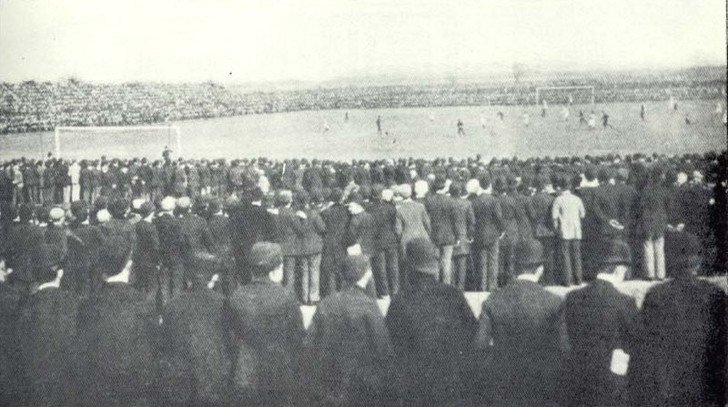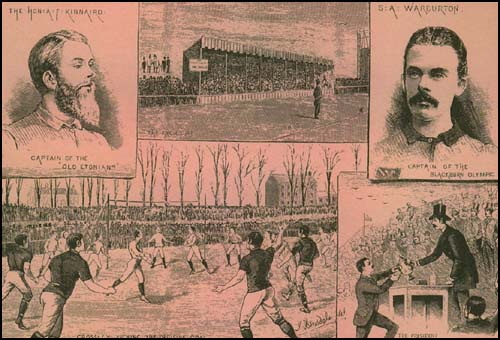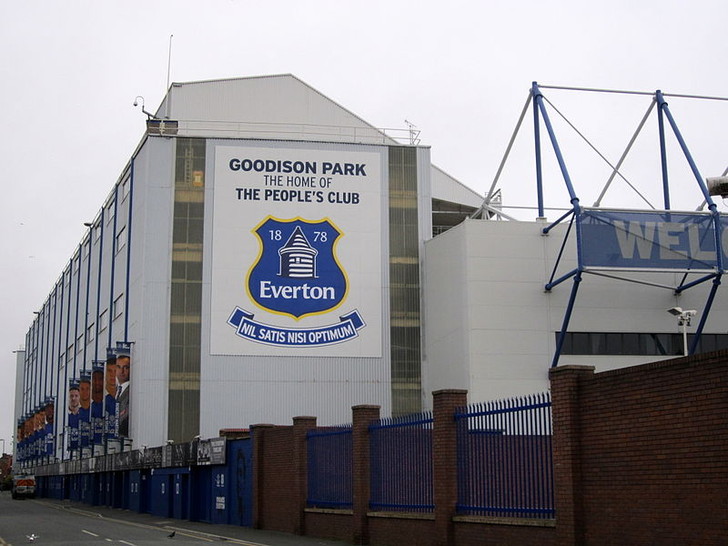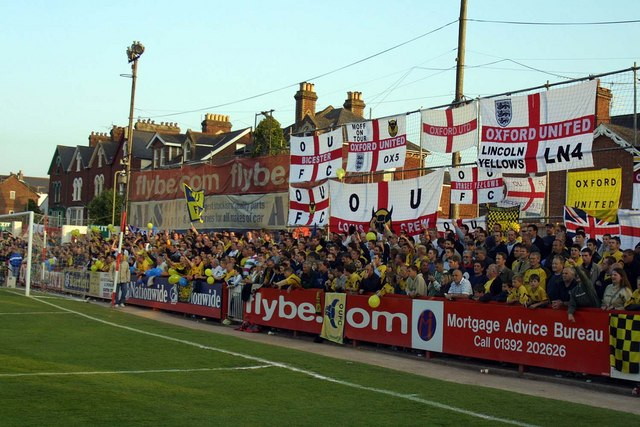
In the modern game a club’s stadium is almost as important as the players who take to the field or the fans who cheer them on.
Grounds like Old Trafford, Anfield and Goodison Park have become part of a team’s folklore and the difference that a partisan crowd can make in a tight game cannot be underestimated.
But it wasn’t always like that. The Romans might have loved an amphitheatre but when Association Football was first played in England there was no such cry for a venue befitting of the game. So how did the changes come about? When was the first stand introduced and how did they evolve and develop over the years?
We’ll attempt to answer some of those questions here or, failing that, make up our own questions and answer them instead.
Football Before Terraces and Stands
Association Football developed out of rugby, with different groups coming up with their own rules for the game until the Football Association was founded in 1863 and decided upon some strict ‘Rules Of The Game’. Little wonder, then, that there wasn’t much of a call for huge stands, expansive terraces and a Director’s Box in the days before people even knew what game they were playing.
But what was there in the early days of the game’s development? After all, people must have been going to watch matches in order for the sport to become as popular as it did. So where did they sit? What did they do? How did they shout abuse at the referee and tell players they were lazy?
To begin with football matches were played on a suitably sized field with a rail around the pitch to let spectators who might happen to be wandering past know where they were allowed to walk up to. If players and officials were lucky then there might have been a tent in one corner for them to use. If supporters were fortunate then there might wooden benches around the edge of the pitch, too.
The truth is that most teams would only use the field for their matches. It wouldn’t be a base of operations or anything special. They would lease part or all of a field on a short-term basis in order to play their matches but have any important meetings in a pub. A look back at the history of football will show you that plenty of clubs, and even the Football Association itself, were set up in public houses.
The First ‘Stadiums’

Asking what the first stand was in football is perhaps a slightly misleading question. It’s not as if loads of teams had playing spaces and then one club decided to make things more comfortable for their supporters by building a stand or terrace for them to use. That’s not the way it worked in the early days of football.
Instead clubs tended to ‘borrow’ the stadiums of other sports teams. From 1872 until 1892, for example, the FA Cup final was held at the Oval Cricket Ground, home to Surrey’s County Cricket Club. The one time that wasn’t the case was in 1873 when it took place at Lilli Bridge, an athletics and cricket ground in the Western part of London.
If a team needed a location to house lots of people then their only real choice was to make use of stadiums and grounds built for sports that were already hugely popular. Over the ten years that the FA Cup was held at the Oval the crowds grew from 2000 to around 25,000. The 1893 final was held at Fallowfield athletics ground in Manchester and 45,000 people turned up. That was when clubs realised they needed a home of their own.
The First Stadium Stands

One of the first things that allowed clubs to develop home grounds was the evolution from sports teams into limited companies. Once this happened clubs were able to sell shares in themselves, thereby raising enough money to build their own stadiums. This, combined with the mass-production of things such as concrete and steel, meant that something that was previously only a pipe-dream could not be realised.
It is well-known that Everton played their games at Anfield before leaving the ground over a rent dispute, thus allowing the formation of their more successful neighbours Liverpool. But it’s also accepted that Goodison Park was England’s first purpose built football stadium. So how is it that Anfield wasn’t classed as the first football ground?
The answer is that originally it was little more than an enclosed field in an area of ground owned by a friend of the club’s chairman who offered it to the club as the game grew in popularity. It allowed them to charge people to watch the matches, where previously they’d just played on a public area in Stanley Park and anyone could turn up and watch. A stand was built at Anfield when matches started to be played their in 1884, perhaps making that the first purpose-built stand for football matches.
The First Terraces

Taking a little step back to before the building of the stand at Anfield or the three-sided Goodison Park stadium, we should briefly mention terraces. These open sections of land allowed spectators to get a raised view of the game and were very popular during the early stages of the sport’s popularity.
To suggest that they could have been classed as the sport’s ‘first stands’ would be slightly misleading, however. In the vast majority of cases these terraces were little more than earthen banks. Oftentimes they would be built up with rubble and rubbish from nearby construction sites. Sometimes old railway sleepers would be put down on the very top in order to give supporters something solid to sit or stand on.
The truth is, then, that narrowing down which was the first ever stand in football isn’t quite that simple. The majority of football stadiums actually grew out of venues that were previously used for others sports or activities like cricket or athletics. They developed exponentially over the years as football grew in popularity but nailing down when exactly the ‘first’ one of anything was built is nigh on impossible.
